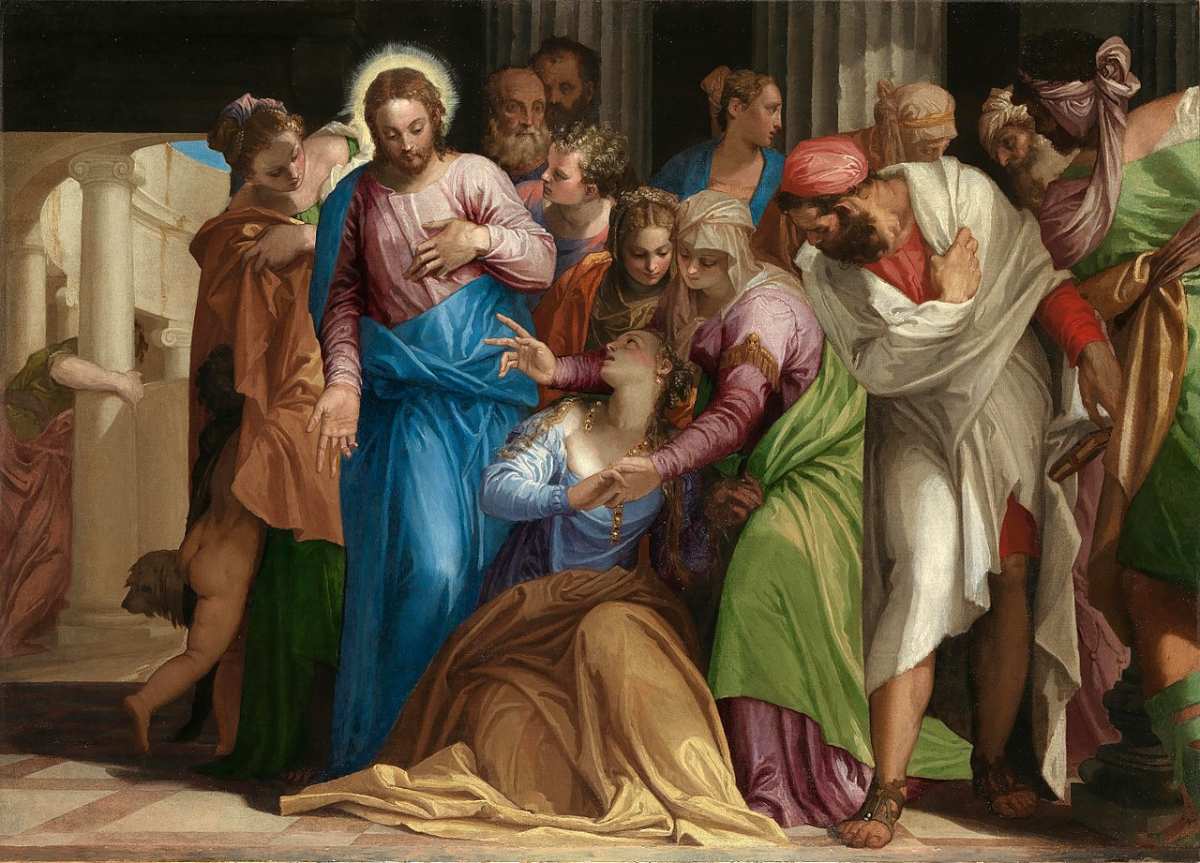
Paolo Veronese was an Italian painter who lived in the 16th century during the Italian Renaissance and painted many of the ceilings and frescoes of public centers in Venice. He’s known for developing the naturalist style of painting and used color in ways few artists were able to achieve at the time. Here, we’re exploring five interesting facts about Paolo Veronese that you may not have realized.
1. Veronese had been known by other names.

That’s right – Veronese was known by two previous names before he became the painter we know as Paulo Veronese.
Well, back in the 16th century, in some cases, surnames were attributed differently than how they’re given today. It was common for your last name to come from your father’s profession. Veronese’s father was a stonecutter or spezapreda in the language spoken in Venice. So, he was first called Paulo Spezapreda due to this custom.
Later, he changed his name to Paulo Caliari since his mother was the illegitimate daughter of a nobleman named Antonio Caliari. Perhaps he felt the name would earn him some prestige and recognition.
As a public figure in Venice, he became known as Paulo Veronese after his birthplace of Verona in the Republic of Venice, Italy.
The earliest known painting that can be attributed to Veronese was signed P. Caliari F. and he resumed signing his art as Paulo Caliari after 1575, even after taking the Veronese name for some time.
This interesting tidbit just goes to show how different things were in the late 1500s.
Get the latest articles delivered to your inbox
Sign up to our Free Weekly Newsletter
2. Veronese was a trained stonecutter.

As was briefly mentioned, Veronese’s father was a stonecutter and as a young boy, Veronese trained with his father in stonecutting. At age 14, those around him noticed that he had such an aptitude for painting that he was encouraged to leave stonecutting and become a painter’s apprentice.
Although it’s never clear what caused that, Veronese’s stonecutting knowledge could have influenced his integration of people with architecture in his paintings. Plus, in those times, many paintings were completed on walls, ceilings, and on altarpieces and his understanding of stone and how it conducts itself could’ve made a difference to his painting finesse.
Veronese would go on to collaborate with architects in various capacities such as Venice’s most renowned architect Andrea Palladio which was widely regarded as “a triumph of art and design.”
The collaboration was so extensive that Veronese decorated the architect’s villas and Palladian buildings as featured in one of his most well-known paintings The Wedding at Cana.
3. Veronese married his teacher’s daughter.

Veronese studied art under two leading painters in Verona, Antonio Badile and Giovanni Francesco Carato. Veronese was a precocious young child and quickly surpassed his masters. He developed an interesting palette and had unique preferences.
Even as a teenager, it seems that Veronese is responsible for much of the work done on Badile’s commissioned work on certain altarpieces since, what would later be known as Veronese’s signature style, was already shining through.
Still, it seems that it was never a competitive relationship between master and apprentice as Veronese went on to marry Badile’s daughter, Elena in 1566. In those days, it’s assumed that one must have needed a father’s blessing to marry his daughter.
4. Veronese decorated the church where he was later buried.

In his early twenties, Veronese received his first important commissioned work from the architect Michele Sanmicheli to work on frescoes for the Palazzo Canossa and after a brief stint in Mantua, he set his sights on Venice.
In 1553, Veronese moved to Venice where he earned his first state-funded commission. He was to paint the ceilings in the fresco of the Sala dei Consiglio dei Dieci (The Hall of the Council of Ten) and the Sala dei Tre Capi del Consiglio in the Doge’s Palace.
For this commission, he painted Jupiter Expelling the Vices which now resides in the Louvre. Veronese would continue working at this palace on and off through his career, up until his death.
Then, a year later, he was asked to paint the ceiling at the Church of San Sebastiano. On it, Veronese painted History of Esther. This series of paintings, along with the work he’d done in 1557 in the Marciana Library, solidified his mastery in the Venetian art scene and he was awarded a gold chain prize. The judges of the prize were Titian and Sansovino.
In the end, Veronese was buried at the Church of San Sebastiano. It’s certainly not common to be buried somewhere with a ceiling that holds one of your greatest masterpieces. This is a truly unique aspect of Veronese’s history.
5. Veronese’s work had “matured” early in life.

These early commissions at Doge’s Palace and from other elite public figures in 16th century Venice became some of Veronese’s most important masterpieces. He was only still in his twenties at the time and yet he was creating a paradigm that defines an era.
His style didn’t change much over the years and Veronese continued to use bold colors and work with religious and mythological themes throughout his career. He earned patrons from aristocratic families.
In his later years, Veronese would decorate the Villa Barbaro, the villa of the aforementioned architect Andrea Padillo, and additional restorations to the Doge’s Palace.
The Counter-Reformation in Venice at the time brought back the Catholic culture meaning, there was more of a call for devotional paintings versus mythological subject matter and you can see the shift in his later work. Still, his overall style remained quite unchanged throughout his life.








